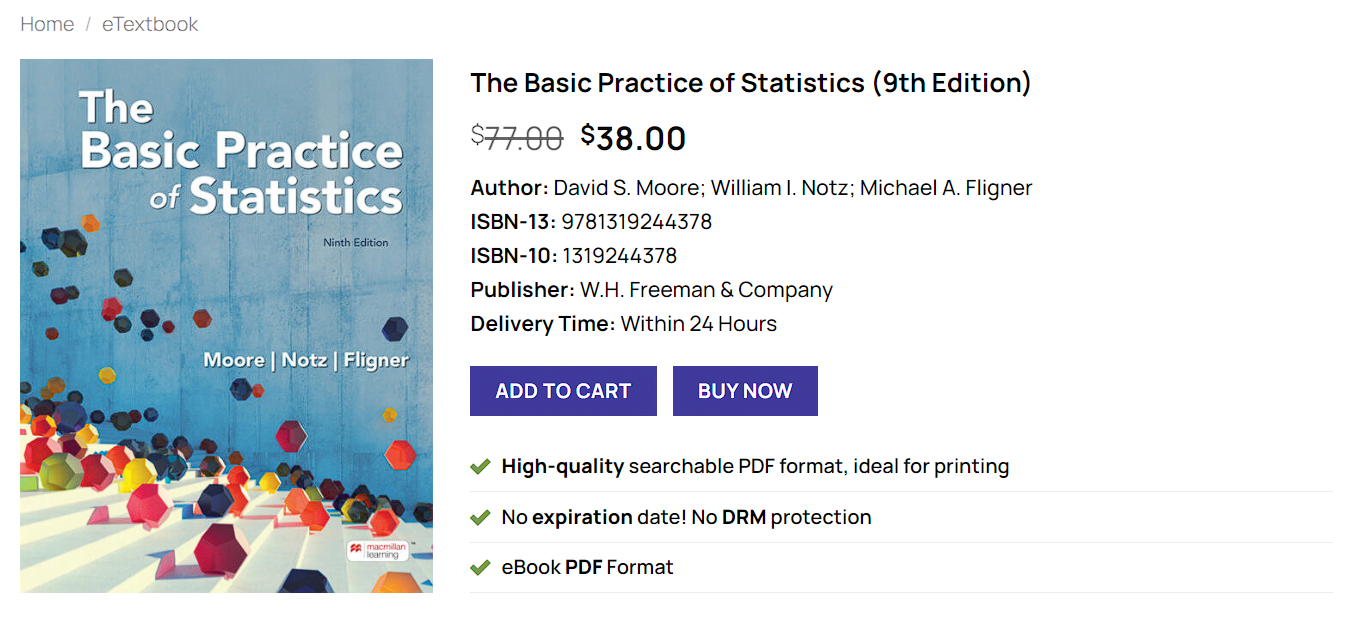‘Basic Practice of Statistics 9th Edition’ by David S. Moore stands as a cornerstone in the realm of statistical education, offering a comprehensive introduction to the subject. The importance of understanding statistics cannot be overstated, as it plays a crucial role in fields such as business, healthcare, and social sciences. This textbook is meticulously crafted to cater to both students and professionals who aim to solidify their foundational knowledge in statistics.
David S. Moore, the esteemed author, brings a wealth of expertise and experience to the table. His credentials are impeccable, with a long-standing career in academia and numerous contributions to statistical education. The book is structured to serve as an accessible gateway for readers with no prior background in statistics, ensuring that complex concepts are broken down into understandable components.
The pedagogical approach of the ‘Basic Practice of Statistics 9th Edition’ is one of its standout features. It includes clear explanations, practical examples, and a variety of exercises designed to reinforce learning. Each chapter builds on previous knowledge, guiding readers through the intricacies of statistical methods and their applications. The inclusion of real-world examples helps to illustrate the relevance and utility of statistics in everyday decision-making processes.
One of the significant updates in the 9th edition is the inclusion of enhanced digital resources. These resources provide interactive tools and supplementary materials that facilitate a deeper understanding of statistical concepts. Additionally, the book incorporates current real-world data sets for practice, ensuring that learners can apply their knowledge to contemporary scenarios.
Overall, ‘Basic Practice of Statistics 9th Edition’ remains an invaluable resource for anyone looking to gain a thorough grounding in statistics. Its thoughtful structure and updated features make it a must-have for both novices and those looking to refresh their statistical skills.
“`
Key Concepts and Principles in ‘Basic Practice of Statistics 9th Edition’
The ‘Basic Practice of Statistics 9th Edition’ provides a comprehensive overview of both descriptive and inferential statistics, laying the groundwork for students to understand and apply statistical methods effectively. The textbook begins with descriptive statistics, emphasizing measures of central tendency such as the mean, median, and mode. These measures help summarize data by identifying the central point around which values cluster. Additionally, it covers measures of variability, including range, variance, and standard deviation, which indicate the spread of data points around the central tendency.
Transitioning to inferential statistics, the textbook introduces probability theory, which forms the basis for making predictions about populations from sample data. It explains the concept of sampling distributions and their role in estimating population parameters. Hypothesis testing, another critical component, is thoroughly discussed, providing students with the tools to make informed decisions based on sample data.
The textbook also underscores the importance of understanding different types of data and scales of measurement. It distinguishes between qualitative and quantitative data, as well as the four scales of measurement: nominal, ordinal, interval, and ratio. This foundational knowledge is essential for selecting appropriate statistical methods and accurately interpreting results.
Graphical representations of data, such as histograms, bar charts, and scatterplots, are highlighted for their ability to visually convey information and aid in data interpretation. By mastering these graphical tools, students can better understand data distributions and relationships between variables.
Moreover, the textbook emphasizes the practical application of statistics through the use of statistical software and tools. It guides students in leveraging these technologies to analyze real-world data, enhancing their ability to apply statistical methods beyond the classroom setting.
Finally, the ‘Basic Practice of Statistics 9th Edition’ stresses ethical considerations and the responsible use of statistics. It ensures that students recognize the broader impact of their analyses and strive for integrity and accuracy in their statistical endeavors. This holistic approach prepares students to navigate the complexities of statistical practice with a strong ethical foundation.

